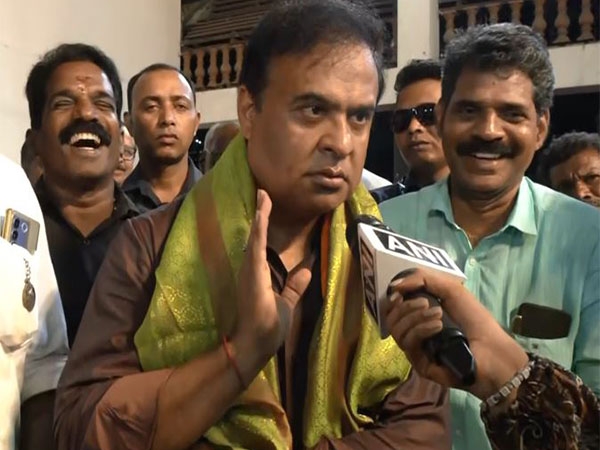Meet Dr Naresh Swami, the priest turned Orchid Hunter of India

Dr Naresh Swami is a seasoned hunter. He walks in the Eastern Himalayan forests, sometimes for days on end. Only he isn't after prey. He goes looking for wild orchids and other non-documented species of plants. And rather than a rifle, he carries a high-definition camera.
At times, much like a seasoned hunter, he must crawl along the forest floor, for some of the plants are no taller than a few centimeters. All in a scientific quest to reveal to the world plants that have remained hidden in the darkest corners of forests for ages.
Often referred to as the “Orchid Hunter of India”, Dr Swami is a man as fascinating as his and discoveries.
Also Read: Mind = blown. Plants may have memories, says game-changing new research
Far from the media spotlight, Dr Swami toils in the harsh terrain of the Himalayas, searching for the elusive plants. A double PhD from Liverpool University and Jawaharlal University, he is said to have travelled about 27,000 km on foot looking for unknown plants, particularly orchids, in Sikkim and Arunachal Pradesh. He has documented over 530 species of orchids in Sikkim, an all time record for the number of species found and studied by a single person from the region. He has published two books on the various species of plants found in the Eastern Himalayas.
The last time such an exercise was conducted was way back in 1898, when the English botanists Sir George King and Robert Pantling published their landmark work The Orchids of the Sikkim-Himalayas, in which they described and illustrated 449 species of orchids. Dr Swami decided to re-document these species and went a step further and discovered 530 new species. He has detailed these species in his book by the same name.
Unlike the two English botanists, who employed Lepcha collectors to bring them live orchid species from various parts of the region, Dr Swami did this documentation on his own, moving from one habitat to another in the harsh terrain with no support.

Like his discoveries, Dr Swami's journey from being a priest to one of India's top botanists is equally fascinating. “Among Namboodiri Brahmins, one of the sons is expected to take up priesthood and, coincidentally, I was chosen to become one. However, I was a bright student and my parents allowed me to pursue higher studies. I became a priest but also completed my Masters in Science. I was later offered PhD at Liverpool University and that was the end of my career as a priest because among Namboodiris, if you cross the sea, you can no longer be a priest,” Dr Swami tells Catch while on his 17-hour journey to Ziro in Arunachal Pradesh.
After finishing his PhD, Dr Swami went to Mathura to become a sanyasi. While he has been reading the Vedas and Upanishads since childhood, the 37-year-old botanist discovered that a lot of orchids from the region find their mention in the ancient scriptures. “I was fascinated after finding references of orchids from the Northeast in many ancient scriptures. It was the turning point in my career as I decided to hunt for these orchids,” he says.
For almost a year, he followed up on the 1898 book on Sikkim's orchids and started working alone in the region before being offered the job of a research assistant by Ashoka Trust for Research in Ecology and the Environment. One of Dr Swami's most remarkable discoveries was of the extremely rare ghost orchid (Epipogium aphyllum) which had never been photographed in India before.
The last time anyone found a ghost orchid anywhere was in September 2010 when a single white flower on a white stem measuring five centimeters was found near the Welsh border in the UK. Before that the plant had been seen in 1986, after which it was officially declared extinct in 2005.
Also Read: Plant species discovered through Facebook for the first time, and its carnivorous
Dr Swami is the only person to have photographed 16 ghost orchids and he can't contain his excitement while talking about them. He mentions how this extremely elusive plant never reappears in the same area again.
“It remains underground for almost 70-80 years and blooms only when the temperature is right. Once it blooms, it moves to a different location and no one knows how. It has no chlorophyll, unlike the majority of plants that use photosynthesis to turn sunlight into proteins and sugars. So, it does not need any light and is a parasite that takes energy from the fungus of the roots of other plants. It was certainly one of my greatest discoveries,” he says.

And then there is the petal-less orchid that has never been photographed by anyone except Swami. “It is the only petal-less orchid found in the Eastern Himalayas. In their monumental work, King and Panting mentioned a 'moist vertical rock' from where their collectors found the species. After more than 125 years, I was able to locate the same moist vertical rock and the species thriving on it.”
Dr Swami recently published another book, Hidden Treasures: Rare Plants of Alpine Himalayas. At present, he is hunting for new species of plants in Arunachal Pradesh.
Dr Swami comes across as a religious person. Indeed, he credits God for all his work. “I was born for this. It could not be a sheer coincidence that I am the only one to see and photograph 184 plants. I am just an instrument to achieve something that is not even possible with huge finances. It is some sort of divine intervention,” he says.
)_53555.jpg)
However, Dr Swami is just underplaying the hardships he has had to endure to document these magnificent plants. Having once come face to face with a bear, Dr Swami says he is terrified of the wild animals that share the landscape he explores. He mentions how the leopard population has grown because of better protection in parks and sanctuaries in and around the region.
“Because of increasing number of tigers, leopards have moved to these regions which makes my work extremely dangerous. Also, there are a lot of snakes in this tropical area. Since some of these plants are so small that I have to sometimes crawl to take photos, it makes my job extremely dangerous,” he says, adding, “but someone has to do it.”
Appalled by the younger generation of researchers, Dr Swami claims that they are only interested in doing PhDs because it gets them a stipend of Rs 18,000. He blames a lot of youngsters for only being interested in writing papers some of which he claims are factually incorrect. Dr Swamy said, “I do this research so that it motivates others to come and explore the flora and fauna of this region.”
Recalling an incident from 2012, Dr Swamy said that when India returned without any medals from the 2012 Olympics, a local from Sikkim told him that if there was ever an Olympic sport in discovering plants, he would get gold. “I was extremely pleased that even locals acknowledge the work that I do.” he concluded.
Also Read: Space Age: water on Mars, amazing Hubble images & more intergalactic stuff from 2015
First published: 4 March 2017, 23:10 IST






![BJP's Kapil Mishra recreates Shankar Mahadevan’s ‘Breathless’ song to highlight Delhi pollution [WATCH] BJP's Kapil Mishra recreates Shankar Mahadevan’s ‘Breathless’ song to highlight Delhi pollution [WATCH]](http://images.catchnews.com/upload/2022/11/03/kapil-mishra_240884_300x172.png)

![Anupam Kher shares pictures of his toned body on 67th birthday [MUST SEE] Anupam Kher shares pictures of his toned body on 67th birthday [MUST SEE]](http://images.catchnews.com/upload/2022/03/07/Anupam_kher_231145_300x172.jpg)






